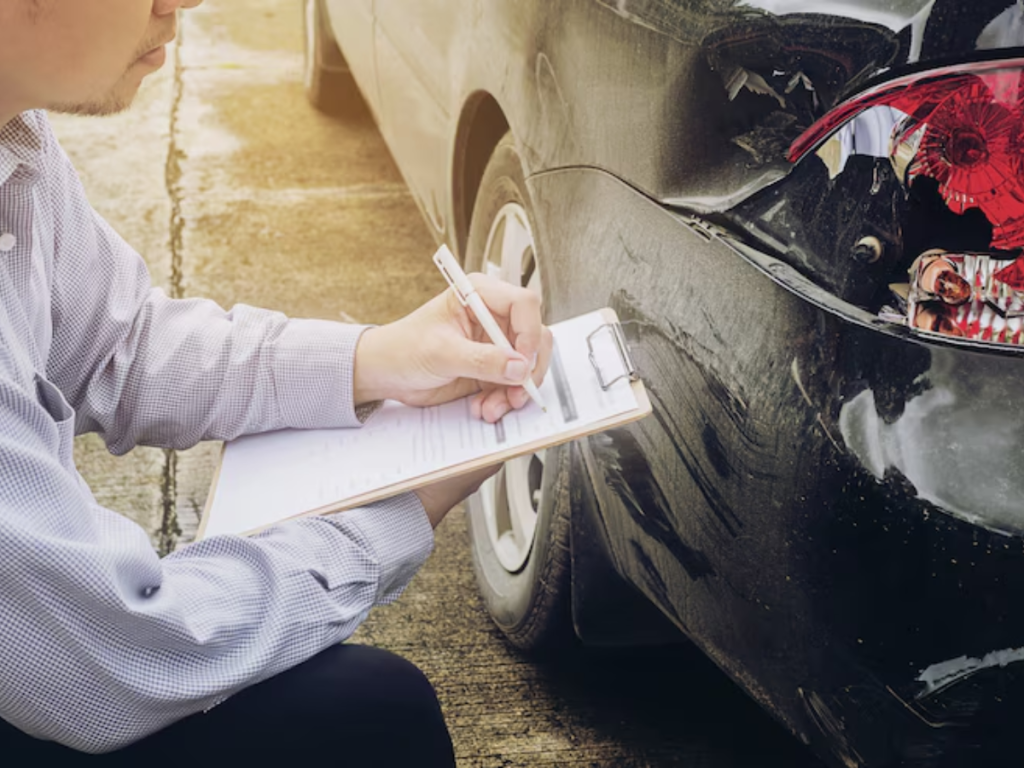Introduction
Auto insurance is a sound financial protection that shields motorists against the unforeseen expenses of auto accidents and other types of car damage. It is not only mandatory in most areas but also a sensible way to control on-road financial risks. Yet being involved in a car accident may impact your policy beyond the short-term damage or liability it will pay for.
One of the most tangible consequences of an accident is a change in your insurance premium. An insurance premium is what you pay in order to keep your policy, which usually happens monthly or yearly. The rate can go up dramatically after an accident, depending on any number of factors like who was responsible, the nature of the accident, and your record as a driver. Knowing why and how these changes take place and how to reduce their effect is necessary to manage your money and have affordable insurance.
How Insurance Companies Evaluate Risk
Insurance firms use risk-based pricing for setting their rates. What they consider is your history of driving and accidents to decide the probability of your making a claim in the future. Whenever you get involved in an accident, your risk level could be revised according to the guidelines of the insurer.
The following factors affect this risk: the nature of the accident, the claim cost, whether you were at fault, and the number of claims you have made in the past. Even a minor fender-bender can result in higher rates if your insurance company decides that your driving style was responsible for the accident.
At Fault Versus Not at Fault Accidents
The effect of a car accident on your insurance rates can be quite different based on who is held liable. If you are responsible for the accident, i.e., your actions directly caused the accident, your insurance provider will most likely raise your rates.
Conversely, not at fault accidents tend to have less effect. This is not always the case, though. It may increase your premiums following a not at fault accident for some insurance companies if they feel that you are more of a risk overall. This might occur if you’ve been involved in several accidents close together in time, even though none of them were your fault.
Type and Severity of Accident
The severity and type of accident also have a big influence on whether your premium will be increased. A minor accident with a small claim can have a small premium increase. In contrast, a severe accident resulting in injuries or heavy property damage can have a huge rate increase.
Insurance companies also consider the nature of the coverage. If you claim under your comprehensive or collision coverage, this could increase your premium in a different way than a liability claim. The greater the amount that the insurance company must pay on your accident, the higher the chances are that they will raise your premiums.
Frequency of Claims
Insurance companies also check the frequency of your claims. Even if your accidents are none of your faults, frequent patterns of claims could mean that your risk profile is higher. That can lead to higher rates or even nonrenewal of your policy.
Recurring claims can be for accidents, theft, vandalism, or any other incident that does result in a payment. Insurers might decide that your mode of driving, residence, or lifestyle is partly responsible for frequent losses and would hike premiums accordingly.
How Long Increased Premiums Last
When your insurance premium increases due to an accident, this change usually does not last forever. In most cases, the rate hike remains in place for three to five years. The exact duration depends on your insurer’s policy and the circumstances of the accident.
Some insurance providers lower the premium over time step by step if you have an accident-free record after the mishap. In other words, being accident free in subsequent years after an event can gradually help your rates diminish.
Accident Forgiveness Programs
To assist their customers with paying for the cost of their first accident, most insurance providers provide accident forgiveness. It stops your premium from rising following your first at fault accident, as long as you have had a clean driving history for a number of years.
Accident forgiveness can be part of your policy automatically or purchased as an add-on for an extra fee. Although it doesn’t erase the cost of the accident itself, it can shield your premium from increases and keep you from suffering long term financially.
How to Reduce the Effect on Your Premium
Though it is perhaps impossible to reverse an accident after it occurs, there are a number of proactive measures you can take to minimize the effect on your insurance rates.
Keep a Clean Driving Record
The most effective way to keep your insurance premiums low is to maintain a clean driving record. This includes obeying traffic laws, avoiding speeding tickets, and steering clear of reckless or distracted driving behaviors. A history of safe driving demonstrates responsibility and lowers your risk profile.
Consider Paying Out of Pocket
For small damages or accidents, it might be more cost-effective to pay out of pocket rather than making a claim. If the damage amount is near your deductible, a claim may not be worth it in the long run due to the future increase in premiums.
Prior to making a claim, determine the total costs and compare those with the long term financial effect of a premium increase. Make sure to have any possible legal requirements for reporting accidents in your area in mind before deciding not to make a claim.
Increase Your Deductible
Increasing your deductible can decrease your insurance rates, so your policy will cost less over time. Having a higher deductible means you’re willing to pay more yourself in the case of a claim, which lowers the risk for the insurer.
Before increasing your deductible, ensure that you have sufficient savings to pay for the added expense in the event that you do need to make a claim. This is ideal for those who are assured of safe driving and not likely to require frequent repairs.
Take a Defensive Driving Course
Numerous insurers provide discounts to policyholders who take certified defensive driving courses. These courses impart valuable skills like hazard recognition, proper following distances, and coping with unforeseen driving conditions.
Taking a course of this nature demonstrates your dedication to defensive driving and could offset the influence of a recent accident on your premium.
Bundle Insurance Policies
Insurance companies often offer discounts to customers who bundle multiple policies, such as car and home insurance. If your premium has increased due to an accident, bundling can be a way to reduce overall insurance costs.
Speak with your insurer to find out which bundling options are available and whether they can help offset the rate increase caused by an accident.
Compare and Review Insurance Providers Regularly
Insurance policies and prices can differ greatly from one insurance company to another. Shopping around and comparing insurance quotes after an accident might be a good option. Certain insurance firms are more forgiving for drivers with recent accidents as long as the rest of their driving record is accident-free.
When selecting providers, do not compare the price alone, but consider also the limits of coverage, reviews on customer service, and the claims process. Select a provider that optimizes cost versus quality service in order to be sure that you get value for money.
Maintain a Good Credit Score
Many states rely on credit scores as an aspect of determining risk. Generally, a person with a good credit score tends to pay lesser premiums since financial responsibility is projected through it. If your premium increased following a crash, optimizing your credit rating will lower the premium again later on.
To create a higher credit score, pay bills on time, decrease credit card balances, and don’t take on unnecessary debt. These practices benefit not only your insurance costs but also your financial well-being as a whole.
Learn the Effect of Your Vehicle Selection
The vehicle you drive also determines your insurance premium. Certain vehicles are more expensive to replace or repair, and others are more likely to be stolen or damaged. Following an accident, your vehicle’s history can further increase your premium.
If you are going to replace your car after an accident, you may want to select a model that is both safe and reliable. Cars with high safety ratings and lower repair bills tend to be less expensive to insure.
Final Thoughts
Car accidents are stressful and expensive incidents, but knowing their impact on your insurance premiums and how to minimize that can make a big difference in your finances. Although an accident may result in higher premiums in the short run, doing the right thing afterward can help you take back control of your insurance expense.
By driving responsibly, investigating accident forgiveness plans, shopping for insurers, keeping a robust credit history, and being well-covered financially, you can not only bounce back from the fallout of an accident but also guard yourself against subsequent hikes. Being proactive and in-the-know enables you to tackle insurance issues with confidence and make choices that promote long-term financial stability.

